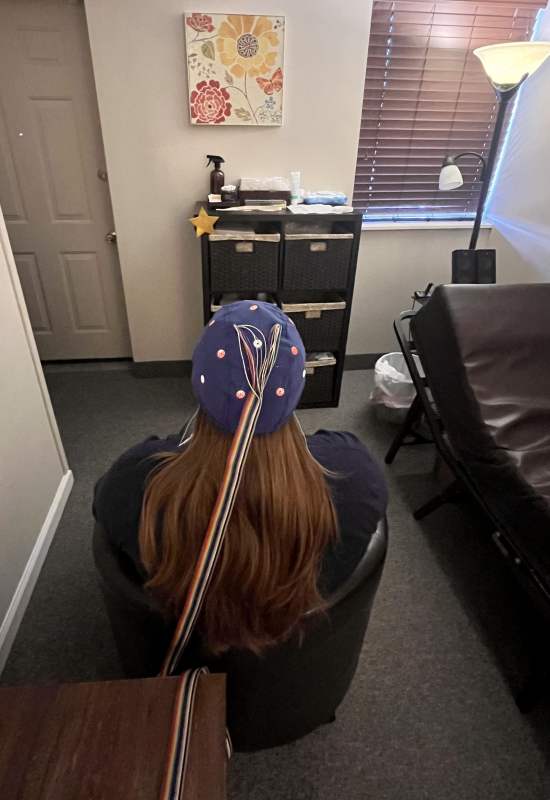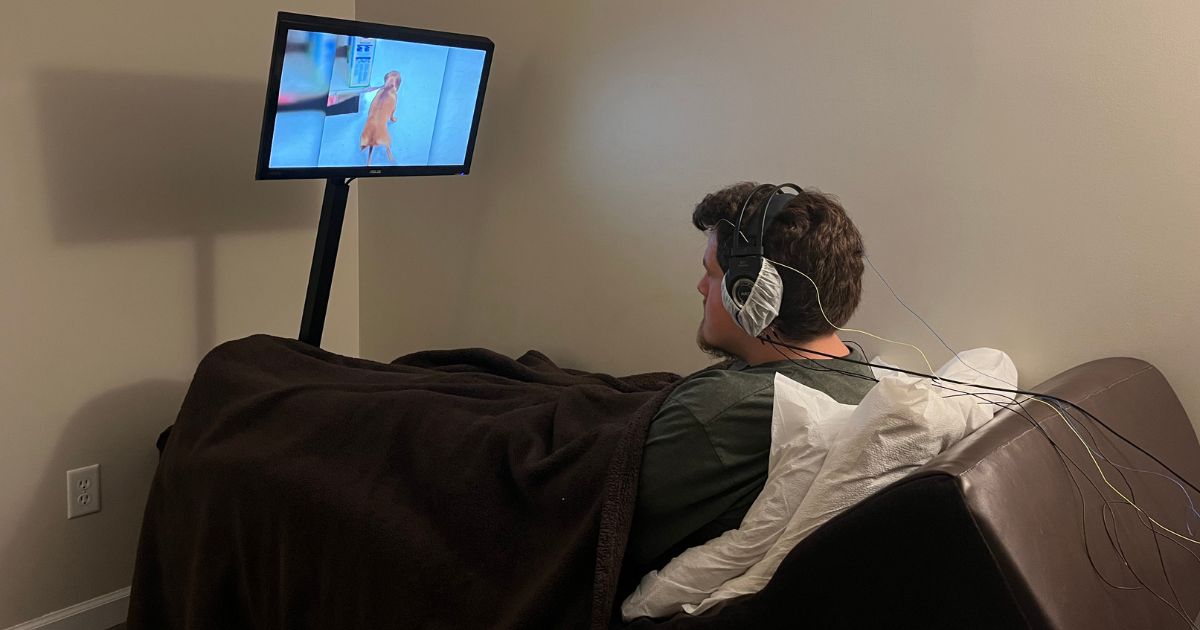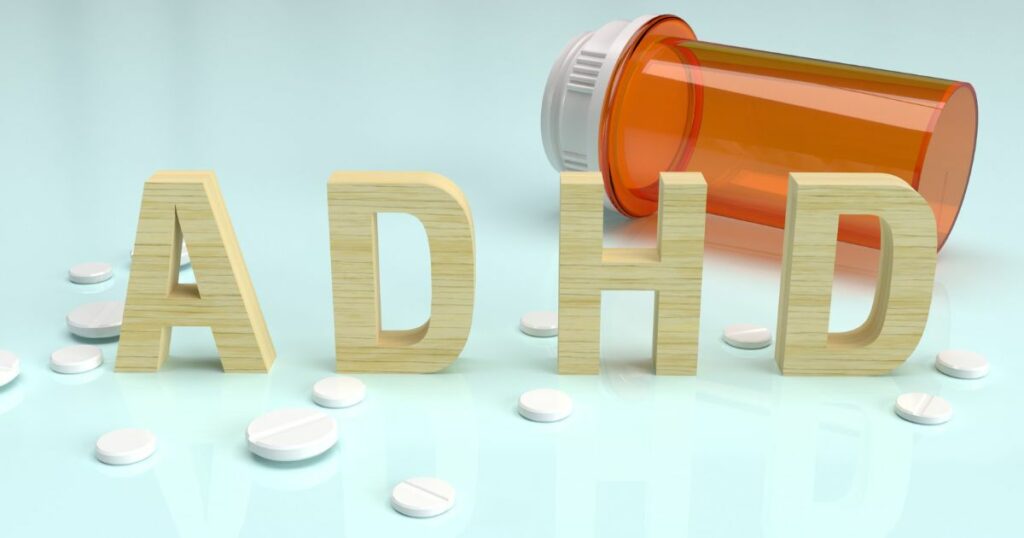Attention Deficit Hyperactivity Disorder (ADHD) is increasingly recognized as a condition that persists into adulthood, affecting millions of people in the United States. While ADHD is often diagnosed in childhood, many adults live with undiagnosed symptoms that impact their daily lives. Recent studies estimate that around 4.4% of U.S. adults have ADHD, though the majority go untreated. In our office, we take a holistic approach to treating adult ADHD symptoms using neurofeedback therapy as an alternative to traditional medications that can have many side effects. If you’re curious about alternative ADHD treatment options then in this article you will learn how ADHD impacts on brainwave regulation, the dangers of ADHD medications like Adderall and how neurofeedback can offer relief by addressing brainwave imbalances.
Prevalence of Adult ADHD in the United States
Although ADHD is often viewed as a childhood disorder, it’s becoming clear that the condition frequently persists into adulthood. ADHD in adults is characterized by inattentiveness, disorganization, impulsivity, and mood instability. For many adults, these symptoms go unnoticed or are attributed to stress or other mental health issues. It is common for ADHD to be diagnosed1 later in life when these symptoms become more apparent due to increased responsibilities at work and in personal life. Adults with undiagnosed ADHD are at greater risk for anxiety, depression, and substance abuse.
Symptoms of ADHD in Adults
Adult ADHD manifests differently than in children, often presenting more subtly. In childhood, hyperactivity is prominent, while adults may experience symptoms like:
- Inattention: Difficulty focusing on tasks and becoming easily distracted.
Example: Do you ever start reading an email but end up scrolling through social media, forgetting what you were originally doing? - Disorganization: Challenges with managing time and staying organized.
Example: Are you constantly misplacing your keys or struggling to keep your workspace organized, making it hard to stay on top of tasks? - Procrastination: Delaying tasks and struggling with completing projects.
Example: Are you constantly misplacing your keys or struggling to keep your workspace organized, making it hard to stay on top of tasks? - Restlessness: Adults may experience internal restlessness, even if they don’t appear outwardly hyperactive.
Example: Do you feel a constant urge to fidget during meetings, even though you might seem calm on the outside? - Impulsivity: Making hasty decisions or reacting emotionally without considering long-term consequences.
Example: Have you ever made a big purchase on impulse, only to regret it later when you realize it wasn’t necessary or affordable? Or maybe you exploded at your kids during dinner over something trifle? - Emotional Dysregulation: Intense emotional responses or mood swings are common in adults with ADHD.
Example: Do you sometimes feel overwhelmed by frustration or anger over small things, then regret how you reacted afterward? In fact, overwhelm is one of the most common symptoms that we see in Moms who have ADHD.
These challenges can severely impact personal and professional relationships, finances, and mental health if left untreated.
Brainwave Dysregulation in ADHD
One of the key neurological findings in individuals with ADHD is the dysregulation of brainwave activity, which can be observed through a quantitative electroencephalogram (QEEG). QEEG measures electrical activity in the brain, allowing clinicians to detect abnormal patterns of brainwave activity in ADHD patients. Specifically:
- Elevated Theta Waves: Theta waves are slow brainwaves often associated with inattention and daydreaming. Adults with ADHD tend to have an excess of theta wave activity, especially in the frontal lobes, which are responsible for executive functions like planning and decision-making.
- Decreased Beta Waves: Beta waves are faster brainwaves that support alertness, focus, and cognitive processing. In individuals with ADHD, beta waves are often underactive, contributing to the difficulties in sustained attention and focus.
- Theta/Beta Ratio: The ratio of slow theta waves to fast beta waves is often imbalanced in ADHD patients. A higher theta/beta ratio is a common marker for ADHD, indicating the brain’s difficulty in maintaining focus and controlling impulsivity.
These findings underscore how ADHD affects the brain’s ability to regulate itself, resulting in the hallmark symptoms of the disorder.

How Neurofeedback Can Improve Brainwave Regulation

Neurofeedback is a promising non-invasive treatment that helps retrain the brain’s electrical activity, allowing individuals to gain better control over their brainwave patterns. During neurofeedback sessions, electrodes are placed on the scalp to monitor real-time brainwave activity, and patients receive feedback that encourages the brain to adjust its activity towards healthier patterns.For adults with ADHD, neurofeedback targets the excess theta wave activity and works to enhance beta wave production. Over time, patients can learn to self-regulate, leading to improvements in focus, concentration, impulse control, and emotional stability. Numerous studies have shown that neurofeedback can significantly reduce ADHD symptoms, making it an effective alternative or complement to traditional treatments like medication.
The Risks of High-Dose ADHD Medications Like Adderall

While medications like Adderall are widely used to manage ADHD symptoms, recent research highlights the risks of high-dose stimulant use for ADHD treatment, particularly for young adults. A study led by psychiatrist Lauren Moran at Mass General Brigham found that individuals taking higher doses of Adderall (40 mg or more) faced a fivefold increased risk of developing psychosis or mania compared to those on lower doses.
Adderall is a prescription medication that contains two drugs: amphetamine and dextroamphetamine. It belongs to a class of medications called stimulants. Adderall works by increasing dopamine release in the brain, which can improve attention and focus. However, when taken in high doses, this dopamine boost can lead to severe side effects, including:
- Psychosis: A state where individuals lose touch with reality, experiencing hallucinations or delusions.
- Mania: Characterized by heightened energy, erratic behavior, and impulsivity, mania can be disruptive and dangerous.
- Cardiovascular Risks: High doses of Adderall can also increase heart rate and blood pressure, leading to long-term health risks, particularly in individuals with underlying heart conditions.
Moran’s study emphasizes the lack of upper dosing guidelines and the increasing misuse of ADHD medications, especially through telemedicine providers. The rise of online ADHD diagnosis and prescription services has contributed to the overprescription of stimulant medications like Adderall, raising concerns about their long-term safety.
Telemedicine and Overprescription Concerns
Telemedicine has made ADHD diagnosis and treatment more accessible, particularly since the COVID-19 pandemic. However, this convenience has also led to an increase in stimulant prescriptions, often without proper oversight. In some cases, patients “doctor shop” to find clinicians willing to prescribe higher doses of medications like Adderall, leading to misuse and adverse effects. The Drug Enforcement Administration (DEA) has extended telehealth prescriptions for ADHD medications through 2024, but concerns about overprescription persist.
Take Control of Your ADHD
Adult ADHD is a complex condition that impacts millions of people, often undiagnosed or untreated. While medications like Adderall may offer temporary relief, the risks of high-dose use, including psychosis and mania, are significant. Brainwave dysregulation, as observed through QEEG, plays a critical role in ADHD, making neurofeedback a valuable drug-free ADHD treatment option that directly addresses the root of the issue by retraining the brain, without the side effects that medications are associated with. Neurofeedback aims to get to the root of the problem and not just cover up the symptoms.
Understanding the neurological basis of ADHD and the potential risks associated with medication is essential for finding a balanced and effective treatment plan. Combining neurofeedback with traditional interventions can provide lasting relief and improve the quality of life for adults living with ADHD.
References:
- Moran, L. V., Skinner, J. P., Shinn, A. K., Nielsen, K., Rao, V., Taylor, S. T., Cohen, T. R., Erkol, C., Merchant, J., Mujica, C. A., Perlis, R. H., & Ongur, D. (2024). Risk of incident psychosis and mania with prescription amphetamines. American Journal of Psychiatry. Advance online publication.
- Kessler, R. C., Adler, L., Barkley, R., Biederman, J., Conners, C. K., Demler, O., Faraone, S. V., Greenhill, L. L., Howes, M. J., Secnik, K., Spencer, T., Ustun, T. B., Walters, E. E., & Zaslavsky, A. M. (2006). The prevalence and correlates of adult ADHD in the United States: Results from the National Comorbidity Survey Replication. American Journal of Psychiatry, 163(4), 716–723.
- Enriquez-Geppert S, Smit D, Pimenta MG, Arns M. (2019.) Neurofeedback as a Treatment Intervention in ADHD: Current Evidence and Practice. Curr Psychiatry Rep.
